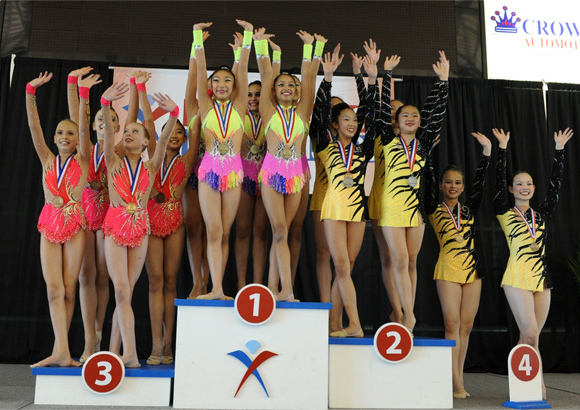About Us
Rhythmic Stars Gymnastics Academy (RSGA) delivers award-winning instruction in the beautiful sport of rhythmic gymnastics in Boston, MA area. Founded and led by nationally and internationally renowned coach Varduhi Nahapetyan, this rhythmic gymnastics school has produced numerous state and national champions. Varduhi and her coaching team's approach is to encourage young gymnasts to strive for their best while maintaining a positive environment. These principles have proven to help young athletes achieve outstanding results in the sport, as well as to teach them important life lessons that help them succeed in the future, whatever they aspire to do.
About Rhythmic Gymnastics
Rhythmic Gymnastics is a unique combination of Dance, Ballet and Art interlaced with gymnastics. It is a sport that harmonizes body movement with grace and beauty of dance and music, while working with ribbons, balls, hoops, ropes and clubs in a choreographed dance and tumble routine.
Gymnastics events test the strength, rhythm, balance, flexibility and agility of the gymnast. Rhythmic gymnastics is a very challenging sport. It requires commitment, confidence, attitude and a lot of practice. Rhythmic gymnastics is performed on a floor area and is split into five disciplines each performed with a hand held pieces of equipment, a ball, hoop, rope, ribbon or clubs to a piece of music.
Rhythmic Gymnastics Benefits
- Learn elegant, expressive, precise & graceful movements.
- Gain positive self esteem & confidence
- Develop flexibility
- Develop agility, strength and coordination
- Learn to set goals
- Physical fitness
- Team skills
- Lasting friendship
Rhythmic Gymnastics Apparatus
The ribbon is long and light and may be thrown in all directions. Its function is to create designs in space. Its flights through the air make images and shapes of every kind. Figures of many different sizes are executed at varying rhythm. Snakes, spirals and throws are the essentials of the ribbon's flight.
Rhythmic gymnastics rope has knots rather than handles at its ends. The technical figures may be made with the rope either taut or loose, with one or both hands, and with or without changing the hands. The relationship between the rope and the gymnast is more explosive than with any other apparatus. The rope often appears as a serpent-like attacker seizing and winding around the gymnast. Suppleness and agility, tinged with elegance, though are always presented in the rope routines.
The hoop defines a space. This space is used to the utmost by the gymnast, who moves within the circle formed. Handling the hoop requires frequent changes of grip and the main requirement is good movement coordination. The shape of the hoop favors rolls, passages, rotations and walkovers.
Clubs used to execute mills, rolls, twists, throws and as many asymmetric figures as possible, combining them with the many figures featured in non- apparatus gymnastics. Exercises with the clubs require a highly developed sense of rhythm, maximum psycho-motor coordination and precision up to watch making standards.
The ball is the only apparatus for which no grip is allowed. This means that a more sensuous relationship between the body and the apparatus is required. The ball moves in perfect harmony with the body. Spectacular throws with control and precision in the catches are dynamic elements.
